#edward ardizzone
Text
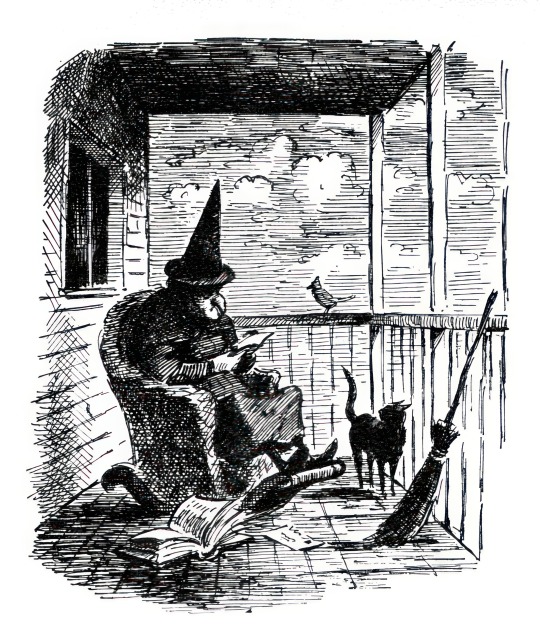


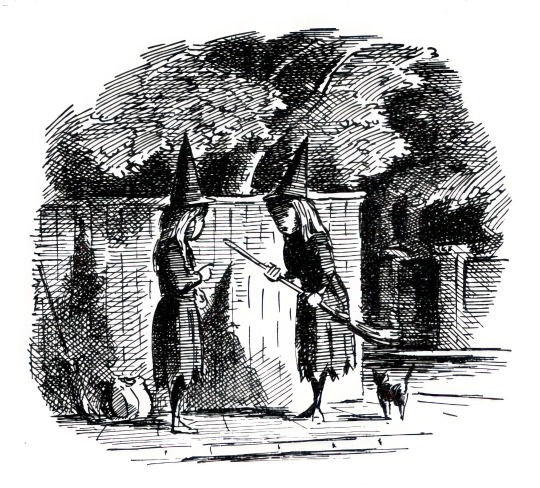



The Witch Family, illustrations by Edward Ardizzone, 1960
583 notes
·
View notes
Text
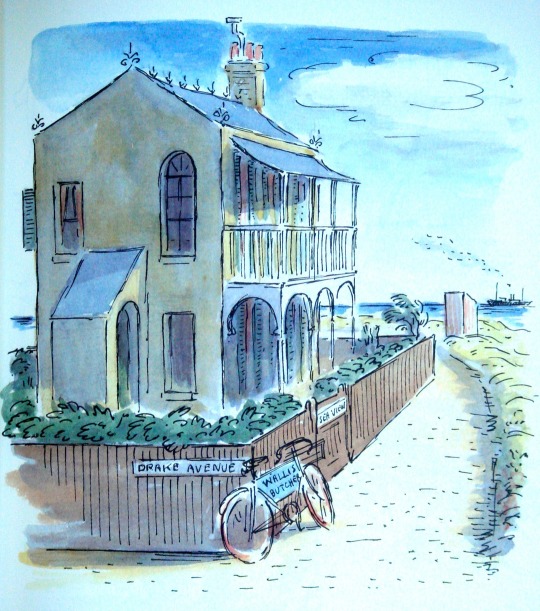
Edward Ardizzone | Duille
19 notes
·
View notes
Text
Down in the Cellar :: Nicholas Stuart Gray

View On WordPress
#0-2347-7565-3#adventure stories#books by nicholas stuart gray#brothers sisters fiction#children&039;s fantasy#children&039;s fiction#children&039;s literature#children&039;s novels#children&039;s stories#edward ardizzone#fantasy fiction#juvenile fiction#uncles fiction#young adult fiction
0 notes
Photo
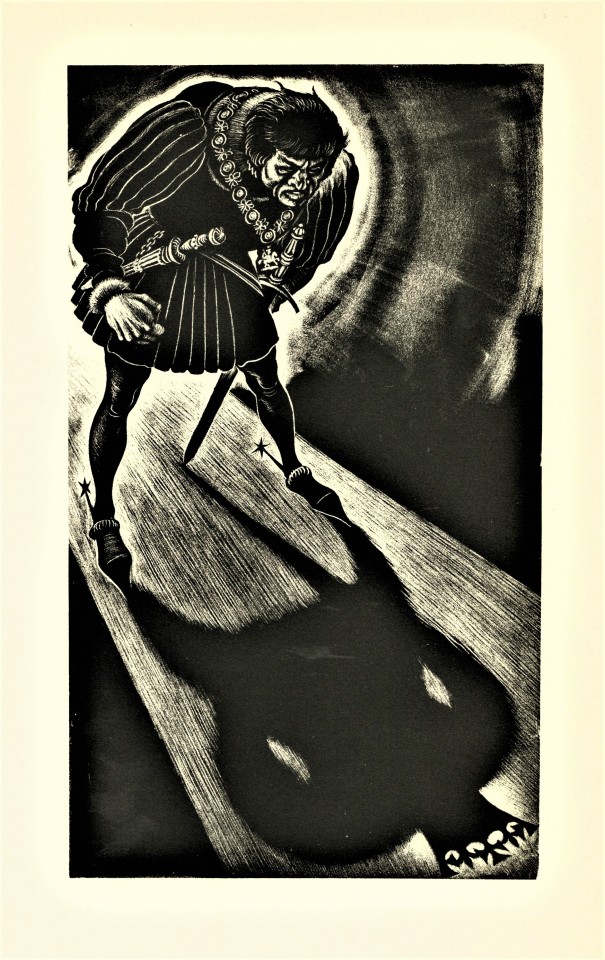

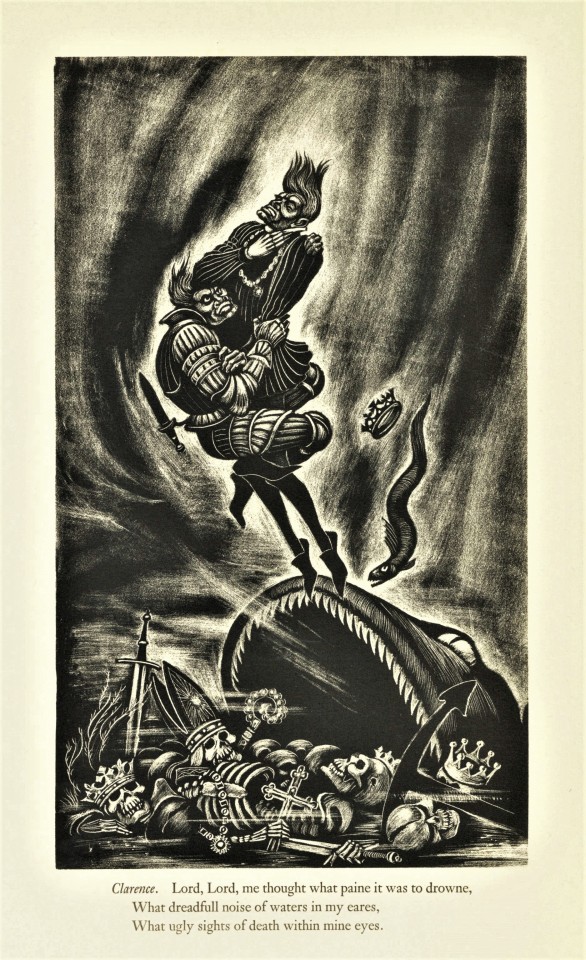



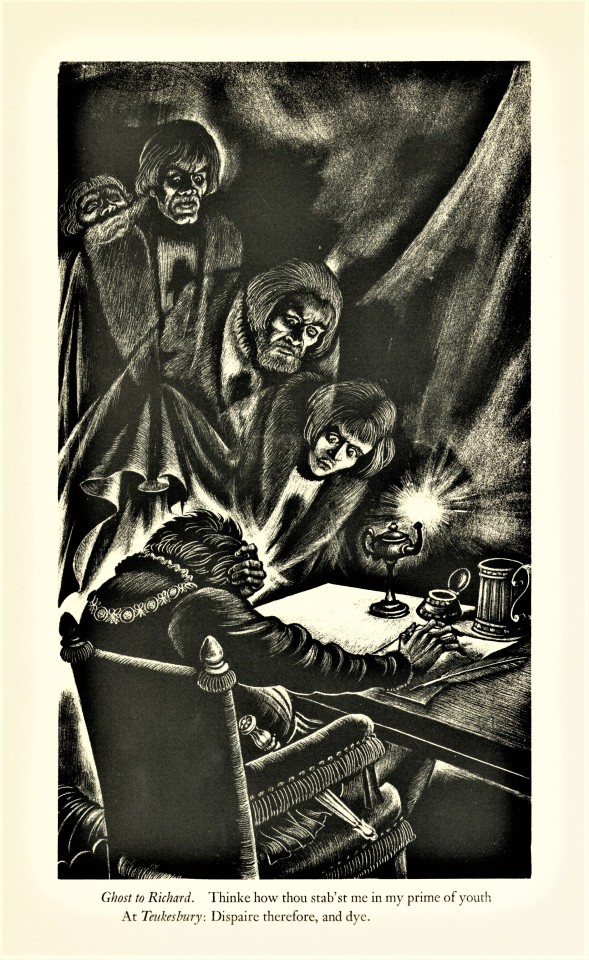
Shakespeare Weekend
Shakespeare’s historical tragedy, Richard the Third, is volume nineteen of the thirty-seven volume The Comedies Histories & Tragedies of William Shakespeare, published by the Limited Editions Club (LEC) from 1939-1940. The play was likely produced in 1594. It was first printed in 1597 in quarto where it was considered a tragedy, but was published in the First Folio in 1623 among the histories.
The German-born American illustrator, Fritz Eichenberg (1901-1990), was the LEC’s third choice as illustrator for this volume. Their first choice was the English painter, Frank Brangwyn (1867-1956), who accepted the project, but became too ill to begin. Their second choice was, the English painter, Edward Ardizzone (1900-1979), who was one of the British Official War Artists. Ardizzone produced a series of watercolors for the book, and they were reproduced for this publication by the lithographer Fernand Mourlot, in Paris. When the Germans invaded Paris, Mourlot was able to escape. He loyally brought with him all of the reproductions of the watercolors, which he then shipped to New York. Unfortunately, the lithographs never reached the Limited Editions Club and are presumed to be at the bottom of the ocean.
Fritz Eichenberg said of illustrating Richard the Third:
I think it is impossible for a modern artist to dissociate his thoughts from the events and emotions of his day... When I tried to fathom Richard’s character, it did not seem to me different from any other power-greedy, bloodthirsty usurper: be it Nero or Hitler.... The artist looks around in his world and he will find living parallels that will make those shadowy tyrants of the past come to life again.
I looked for a technique that equaled wood-engraving in its poignant darkness and sparse highlights, something that corresponded with the nightmarish quality of the play in its gloomy darkness. I think I found the proper medium in these stone engravings, scraped out of the darkened lithograph stone with the help of diamond, knife and razorblade, wonderfully precise and willing tools in the hands of the artist, but still, when you think of them in terms of a Richard III, just as precise instruments of bribe, murder and destruction.
The volumes in the set were printed in an edition of 1950 copies at the Press of A. Colish, and each was illustrated by a different artist, but the unifying factor is that all volumes were designed by famed book and type designer Bruce Rogers and edited by the British theatre professional and Shakespeare specialist Herbert Farjeon. Our copy is number 1113, the number for long-standing LEC member Austin Fredric Lutter of Waukesha, Wisconsin.
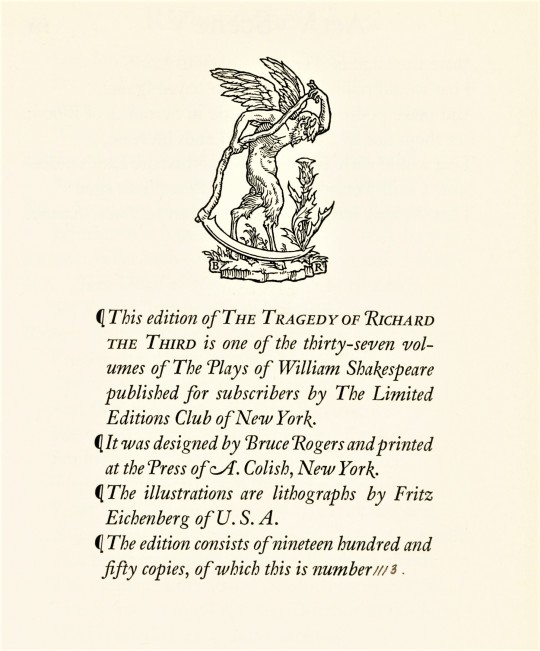
View more Limited Edition Club posts.
View more Shakespeare Weekend posts.
-Teddy, Special Collections Graduate Intern
#Shakespeare Weekend#William Shakespeare#Bruce Rogers#Herbert Farjeon#Press of A. Colish#Limited Editions Club#LEC#The Tragedy of Richard the Third#Richard the Third#Richard III#fine press books#Lithography#Fritz Eichenberg#Book illustration#Drawing#Reductive Drawing#teddy
128 notes
·
View notes
Note
Do you take inspirations from children book illustrations? Your general artstyle (mainly background art) reminds me of colorful children books in a way
a bit, yeah! I have an aunt who does children’s books, and i’ve always really admired her work and a lot of other artists in that field. As a kid, I was really in love with the work of rosemary wells, as well as tasha tudor and edward ardizzone. I think its a wonderful field for a few things- one, watercolor and gouache illustration- two, exploration of space and enviroment in an interesting way and- three, color. I don’t plan to work in that field simply because i’m interested in making erotic and adult work and i’d rather not cross those subjects, but i do wish there was more of a market for illustrated books for adults, because i would be all over that.
10 notes
·
View notes
Text
tagged in a thing by @verecunda!! it took me ...several weeks to actually do it, but I Have been thinking about it the entire time. so.
rules: list ten books that have stayed with you in some way, don’t take but a few minutes, and don’t think too hard - they don’t have to be the “right” or “great” works, just the ones that have touched you.
The Tombs of Atuan, Ursula K. LeGuin - this is the book that I spent my whole life looking for, was certain existed, and well - it's real, and was exactly what I needed when I found it, and that's not something that happens often.
Treasure Island, Robert Louis Stevenson - so many of the best developments of the past few years of my life can be owed directly to this book. which is a wild thing to say, I'll admit.
Spying on Whales, Nick Pyenson - ocean's haunted! whales are full of weird goo! and other fun facts written in such a tranquil manner.
Beowulf, as translated by Seamus Heaney - it's Beowulf. what more have I to say. if you know you know.
Bonnie Dundee, Rosemary Sutcliff - that incredibly rare thing, a book that actually depicts the artistic process in a way that makes sense to me as a person who draws.
The Flight of the Heron, D.K. Broster - previously unimaginable occurrences have in fact Repeatedly Occurred because of this book. shan't elaborate as I'm sure you've seen my soupy state of being over the last year or so.
The Adventures of Robin Hood, Roger Lancelyn Green - almost positive that this was the first book I ever truly Shouted about. there's a half-written stage adaptation written by twelve-year-old em around in some folder somewhere still...
In Small Things Forgotten, James Deetz - sends me into some kind of Architectural Trance every time I read it.
Tim To The Lighthouse, Edward Ardizzone - administer this potion to your children at frequent intervals to most certainly turn them into boat-obsessed scribble artists who will never recover.
By the Great Horn Spoon, Sid Fleischman - ...actually I just realized that a lot of the way and what I write now can be traced directly to having this poured directly into me as a small child as well. hm.
and I shall tag... @sailorpants, @dxppercxdxver, @sanguinarysanguinity, @natdrinkstea, @alizuriacrow, @cytocutie, @what-even-is-sleep, @graveyardrabbit, @annabellioncourt, @cedarboots, if you'd like to share?
#one of those tag things#an example of How I Am About Beowulf is 'happy 21st birthday! I'm going to do an impromptu reading of the first part of beowulf at you!'#...you get the idea.
24 notes
·
View notes
Photo

Raymond Briggs, who has died aged 88, did a great deal to elevate the art of illustration to being something much more than a servant of the written word. Though he was best known for his hugely popular books Father Christmas (1973) and The Snowman (1978), his output also explored themes such as war, politics and the environment through a deeply human, very British lens that often settled on the quiet heroism of ordinary lives.
Briggs may be seen to sit comfortably in the English anecdotal tradition exemplified by Randolph Caldecott in the 19th century and Edward Ardizzone in the 20th, but his often wordless graphic literature built bridges between the picture book and the comic or graphic novel, introducing a new way of reading to the adult publishing market, or at least asking grownups to relearn the business of reading a silent visual sequence.
He started out in 1957 by hawking his portfolio around as a graduate of the Slade School of Fine Art, London, picking up freelance illustration work from newspapers, magazines and design studios. His first book commission came from the editor Mabel George at Oxford University Press, in the form of illustrations to Peter and the Piskies: Cornish Folk and Fairy Tales (1958) by Ruth Manning-Sanders.
George championed the work of a number of artists who were to transform picture-book illustration in the early 1960s, including Brian Wildsmith and Charles Keeping. She sought out printers who were at the cutting edge of developing technology, and who could do justice to the work of these emerging artists. But, as with most illustrators, Briggs’s early working years involved undertaking a range of commissions, drawing anything and everything, starting off with a schematic diagram for House and Garden magazine in 1957 – “how deep to plant your bulbs”.
As various narrative texts came his way, he realised that not all of them were of the highest quality, and took to writing himself. In 1961 he wrote and illustrated two books, Midnight Adventure and The Strange House, for the publishers Hamish Hamilton, with whom he would have a lasting working relationship.
That year, he began teaching illustration part-time at Brighton College of Art (now Brighton University’s faculty of arts) at the invitation of the then head of department, the calligrapher and engraver John R Biggs. He continued to teach for a day a week at Brighton until 1987, and his tuition was much admired and appreciated by generations of artists including the prolific illustrator and Observer political cartoonist Chris Riddell.
In 1963 Briggs had married the painter Jean Taprell Clark. Her death from leukaemia in 1973, and the deaths of his parents, led Briggs to throw himself into his work. A major breakthrough had already come in 1966, with The Mother Goose Treasury, for which he received his first Kate Greenaway medal. Father Christmas brought him a second, and catapulted him to fame. His grumbling, lavatorial and flawed Santa was immensely popular.
As with all Briggs’s subsequent titles, the book is full of autobiographical elements and references. His own childhood home and Loch Fyne holidays appear regularly and he himself pops up in the follow-up, Father Christmas Goes on Holiday (1975).
Briggs can be found standing ahead of Father Christmas in the queue for a shave at the campsite, along with the illustrator John Vernon Lord (sporting his initials on his wash bag). The author’s VW Camper van would make regular appearances too. Fungus the Bogeyman (1977) could also be seen as a character very much close to home, displaying as he does an extreme version of the author’s own tendency to be outspoken and impatient.
At Hamish Hamilton the newly arrived editor Julia MacRae (later to set up her own imprint) played a major role in developing the artist’s career. The illustrator John Lawrence, who was also published by Hamish Hamilton, recalled those days with great fondness: “All the talk was about ‘is the world ready for Fungus the Bogeyman?’ and we all turned up at the launch party in green wellingtons surrounded by buckets of suspicious-looking green liquid, wondering whether it might be the wine.”
The subject of mortality formed a recurrent theme, addressed explicitly in Briggs’s account of his parents’ lives, Ethel & Ernest: A True Story (1998), which was made into an admired full-length animation broadcast at Christmas in 2016, and implicitly in the melting at the end of The Snowman and the disappearance of The Bear in the 1994 book of that name.
But perhaps the most powerful motivation was a hatred of injustice by authority toward the powerless and naively respectful common man. The latter could be seen most directly in When the Wind Blows (1982), Briggs’s examination of an elderly couple’s attempts to follow government guidelines as nuclear war breaks out; and The Tin-Pot General and the Old Iron Woman (1984), a thinly disguised General Leopoldo Galtieri and Margaret Thatcher.
In 1982 he told the Times: “When I did [When the Wind Blows] I was not remotely a CND supporter. I simply thought it was good subject. It is highly depressing and fairly political, and I could not even think who was going to buy it. But I never think of the potential audience when I embark on a book; this was not even done specifically for children.”
Nevertheless, the children of his long-term partner, Liz, provided inspiration and source material for other projects, notably The Puddleman (2004), which grew from a remark made by one of the young children on passing a puddle while the family were out walking in the countryside.
His final book was consciously intended to be just that. Compiled across several of his last years, Time for Lights Out (2019) is a poignant, funny and deeply honest exploration of the experience of ageing and reaching the end of life, in the form of a collage of verse, drawings and random thoughts.
Many of Briggs’s books were successfully adapted for film and other media, Channel 4’s 1982 animated film version of The Snowman, with its familiar theme song Walking in the Air, became a staple of Christmas Day TV. Briggs endorsed a sequel, The Snowman and the Snowdog, broadcast in 2012. Other books were translated for stage and radio, with Briggs taking a keen interest in the overall production.
He was born in Wimbledon, south-west London, to Ethel (nee Bowyer) and Ernest Briggs. Their first meeting is beautifully described in the wordless opening sequence of the book devoted to their story. Ethel, a young parlour maid in a Belgravia house, had been innocently shaking out her duster from an upper window as Ernest passed by on his bicycle and confidently returned what he took to be a friendly wave.
Briggs attended the local Rutlish school and went on to study at Wimbledon School (now College) of Art, the Central School of Arts and Crafts (now Central Saint Martins) and, after a two-year break for national service, the Slade. His father, a milkman, had tried to dissuade his son from studying at art school, fearing that it would not equip him for stable employment.
Briggs’s keen interest in narrative drawing was not welcomed at Wimbledon School of Art, which was rooted in traditional representational painting. He recalled: “I had gone to art school to learn to draw so as to become a cartoonist. But I was soon told that cartooning was an even lower form of life than commercial art.”
Such prejudices, still not entirely eradicated today, were commonplace at art schools of the time. Although he bemoaned his tutors’ failure to recognise a “natural illustrator”, the formal training that he received imbued in Briggs a strong sense of structure and of the importance of good draughtsmanship. These equipped him well in book illustration, although he left the Slade with what he saw as a poor sense of colour and a dislike of paint. When he eventually arrived at the film version of The Snowman, he expressed pleasure at how it so faithfully and painstakingly replicated his coloured-pencil technique, despite the massively labour-intensive approach that this necessitated.
The characteristic that the journalist John Walsh described in a 2012 interview as a very English “strenuous curmudgeonliness” had become in later years a stereotype that Briggs embraced, exemplified by his column in the Oldie, Notes from the Sofa, collected in book form in 2015, where he would rail against sundry incomprehensible aspects of modern life.
But friends knew another side to Briggs – loyal and playful, an inveterate practical joker. Lord once made the mistake of confessing to a dislike of dogs in the presence of Briggs, thereby immediately committing himself to becoming the recipient of all manner of canine-related gifts on subsequent birthdays and Christmases. Like so many of his characters, Briggs’s grumpiness never quite managed to conceal an underlying warmth and kindness. In 2017 he was appointed CBE.
Liz died in 2015. He is survived by her children, Clare and Tom, and grandchildren, Connie, Tilly and Miles.
🔔 Raymond Redvers Briggs, illustrator and author, born 18 January 1934; died 9 August 2022
Daily inspiration. Discover more photos at http://justforbooks.tumblr.com
27 notes
·
View notes
Text





My top ten reads of 2022
Memoirs
🌼 Head Above Water by Shahd Alshammari
🌼 The Return by Hisham Matar
🌼 How I Survived a Chinese ‘Re-Education Camp’ by Gulbahar Haitiwaji and Rozenn Morgat, translated by Edward Gauvin
Fiction
🌼 Discretion by Faïza Guène, translated by Sarah Ardizzone
🌼 What Strange Paradise by Omar El Akkad
🌼 As Long As the Lemon Trees Grow by Zoulfa Katouh
🌼 No Land to Light On by Yara Zgheib
Short Stories
🌼 Shatila Stories published by Peirene Press, nine contributors: Omar Khaled Ahmad, Nibal AlAlow, Safa Khaled Algharbawi, Omar Abdellatif Alndaf, Rayan Mohamad Sukkar, Safiya Badran, Fatima Omar Ghazawi, Samih Mahmoud, Hiba Mareb. Translated by Nashwa Gowanlock
🌼 Manchester Happened by Jennifer Nansubuga Makumbi
🌼 The Sea Cloak and Other Stories by Nayrouz Qarmout, translated by Perween Richards
#bookblr#translated literature#short stories#memoirs#contemporary fiction#ya fiction#arab literature#favorite books#book recommendations#book reccs
8 notes
·
View notes
Link
Check out this listing I just added to my Poshmark closet: 🚨LAST CHANCE!🚨 Vintage vtg 1962 Tims Friend Towser book.
0 notes
Photo

【素敵な洋書絵本の紹介】 ディラン・トマスはイギリス、ウェールズ南部の海沿いの街スウォンジーで生まれました。 彼は数々のアーティストに影響を与えていま す。ノーベル文学賞を受賞したボブ・ディランは彼の名前からとられているそうです。 この本は、絵本ではありますが、それは詩でもなく、散文と言っていいかもしれません。 たくさんの懐かしい思い出が重なり合いながら、ゆっくりと広がっていく子ども時代のクリスマスの風景が、エドワード・アーディゾー二の挿絵と ともに浮かび上がってきます。 ディラン・トマスのその感性は、クリスマスの時期のあの独特の空気感をうまく表現しています。 日本でも長く読み継がれている「ウェールズのクリスマスの想い出」です。アーディゾーニの挿絵が味わい深くて良いですよ。 A Child's Christmas in Wales (Godine Storyteller) Contributor(s): Thomas, Dylan (Author) , Ardizzone, Edward (Illustrator) EAN: 9780879233396 Publisher: David R. Godine Publisher Binding: Hardcover Copyright Date: 1980 Pub Date: December 01, 2014 Target Age Group: 08 to 11 Physical Info: 1.07 cms H x 24.69 cms L x 19.51 cms W (0.34 kgs) 43 pages Annotation: Of all the modern holiday classics, this is perhaps the best known and best loved. In humorous, sonorous, nostalgic prose, Dylan Thomas recalls the church-going, the tree-trimming, the food, the carols and games, not of one childhood Christmas but of them all: he distills here the Perfect Dream of Christmas. For this edition, the immortal Edward Ardizzone produced 30 delightful watercolors and drawings (and if you're clever you can recognize Cardiff as the Welsh town in which the story is set) as a perfect counterpoint to Thomas's lilting words. #dylanthomas #edwardardizzone #readleafbooks #art #本 #本棚 #絵本 #児童書 #絵本屋 #洋書絵本 #絵本が好き #絵本が好きな人と繋がりたい #絵本のある暮らし #芸術 #英語 #イラスト #base #baseec #クリスマス @readleafbooks Webショップで紹介中。プロフィールからぜひどうぞ! https://www.instagram.com/p/CmEOmO7P5Ug/?igshid=NGJjMDIxMWI=
#dylanthomas#edwardardizzone#readleafbooks#art#本#本棚#絵本#児童書#絵本屋#洋書絵本#絵本が好き#絵本が好きな人と繋がりたい#絵本のある暮らし#芸術#英語#イラスト#base#baseec#クリスマス
0 notes
Photo
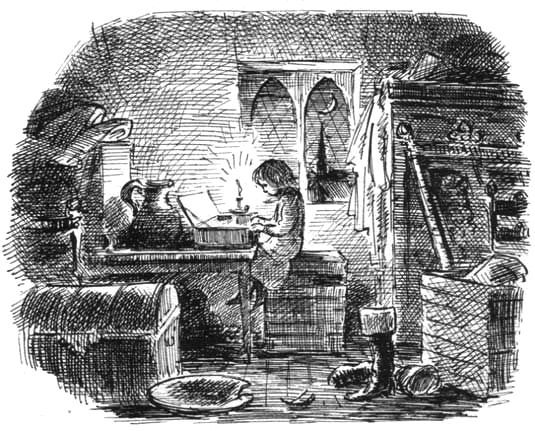
Pen and Ink by Edward Ardizzone
160 notes
·
View notes
Photo
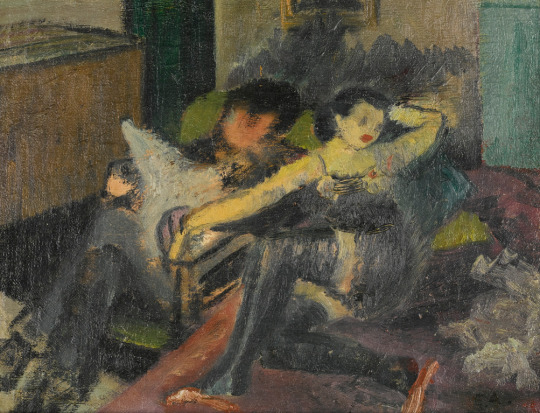
Masculine Indifference - Edward Ardizzone
Vietnamese-British, 1900-1979
oil on canvas laid down on panel, 21.5 x 28 cm. 8½ x 11 in.
74 notes
·
View notes
Photo
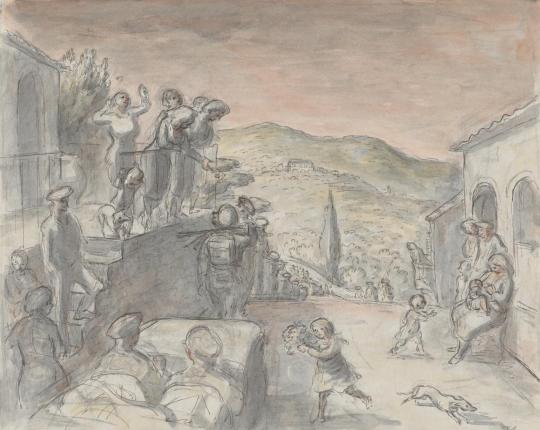
Edward Ardizzone - Marching through a Sicilian village, 1943, watercolour, ink and chalk
Edward Jeffrey Irving Ardizzone, CBE RA (1900 – 1979), was born in Haiphong (northern Vietnam) and raised in Suffolk, England. Ardizzone is known for his illustrations, paintings and print-making. Ardizzone worked as a full-time, official war artist during World War II. He is the author and illustrator of books, many of them for children.
#Edward Ardizzone#british artist#World War Two#world war 2#wwII#sicily#Sicilian#italy#illustration#drawing#war time art#war artist#1943#1940s
6 notes
·
View notes
Photo
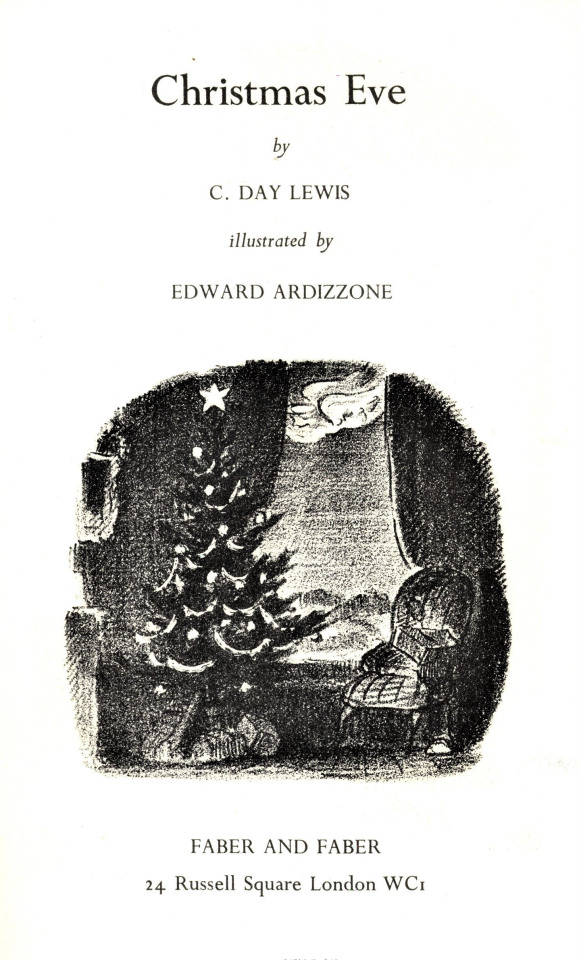

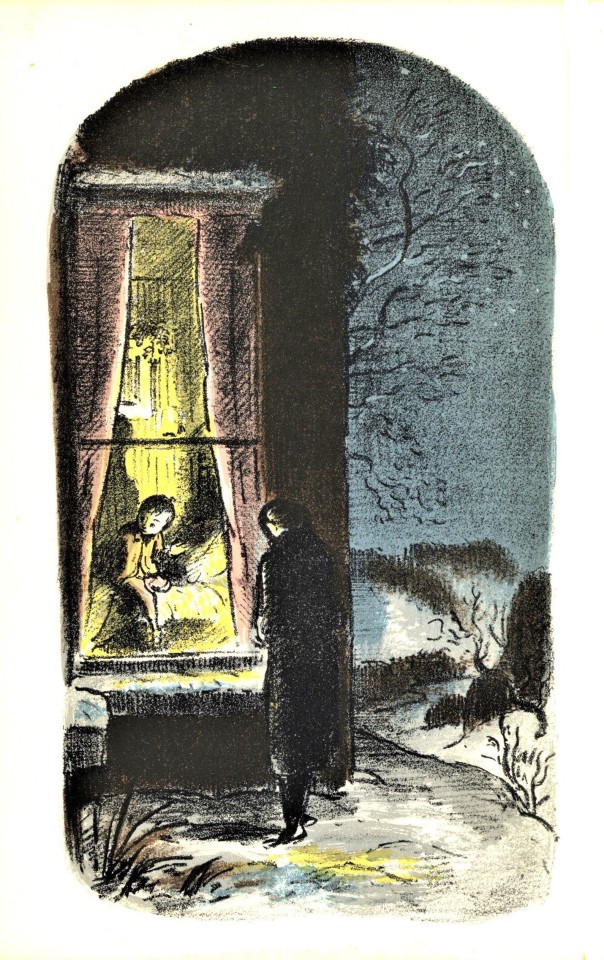
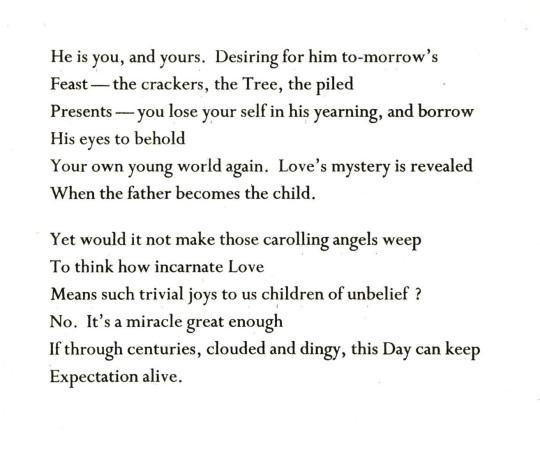

Christmas Eve
On this day before Christmas, we present Christmas Eve, a poem by Irish-born British Poet Laureate C. Day Lewis, to remind us holiday-jaded readers of the simple pleasures of the season -- as well as its religious significance. The illustrations are by English writer, artist, and illustrator Edward Ardizzone, and the little chapbook was published in London by Faber and Faber as part its 1954 revival of the Ariel Poems series, which originally began in 1927 as a series of illustrated pamphlets with holiday themes by noted writers and illustrators of the day to be sent to the firm’s clients and business acquaintances as Christmas greetings.
On this Christmas Eve, we hope that you too are “wild with expectancy for the hollied day,” although we agree that in these jaded times “It’s a miracle . . . this Day can keep expectation alive.”
View our other posts from Christmas Eves past.
#Christmas Eve#holidays#C. Day Lewis#Edward Ardizzone#Faber and Faber#Ariel Poems#chapbooks#illustrations#poems#poetry
40 notes
·
View notes
Text

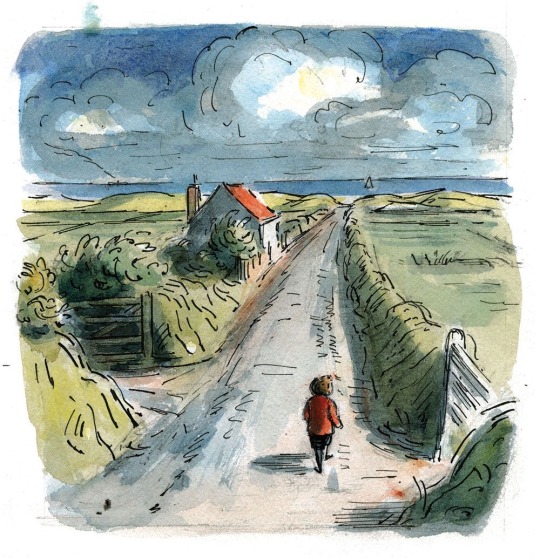

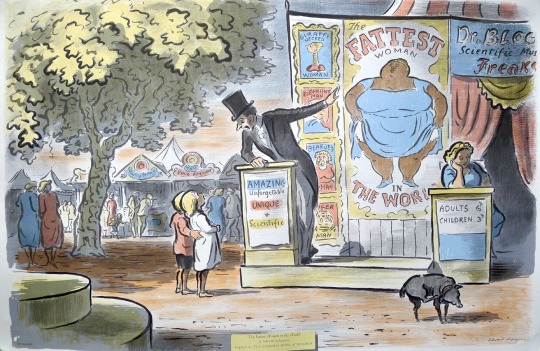
Artist/illustrator, Edward Ardizzone (1900-1979).
148 notes
·
View notes
Text
Letters from Ardizzone
In Judy Taylor’s book Sketches for friends, 2002 are a series of Edward Ardizzone’s illustrated letters. Some I have illustrated below. From reading the Tim series of books, Edward Ardizzone seemed like a kind person and his letters have a joy to them as well with all the comic illustrations.
It was an age when the postal service would run almost continuously and you could send a letter in the morning and know it would get there in the evening. You could keep in contact throughout the day.
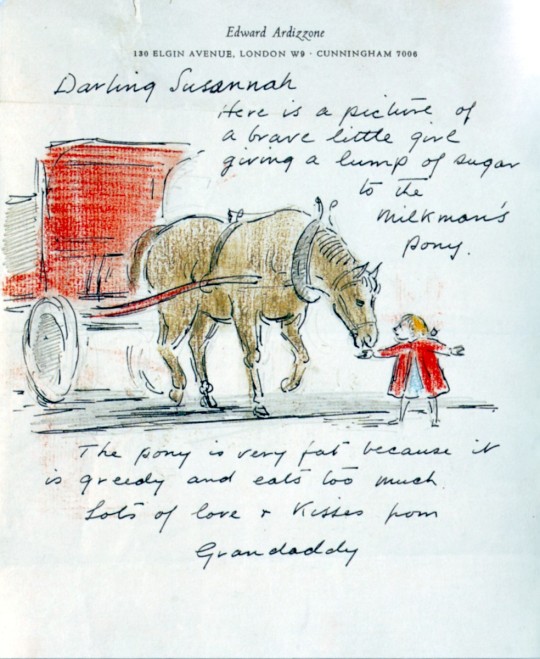
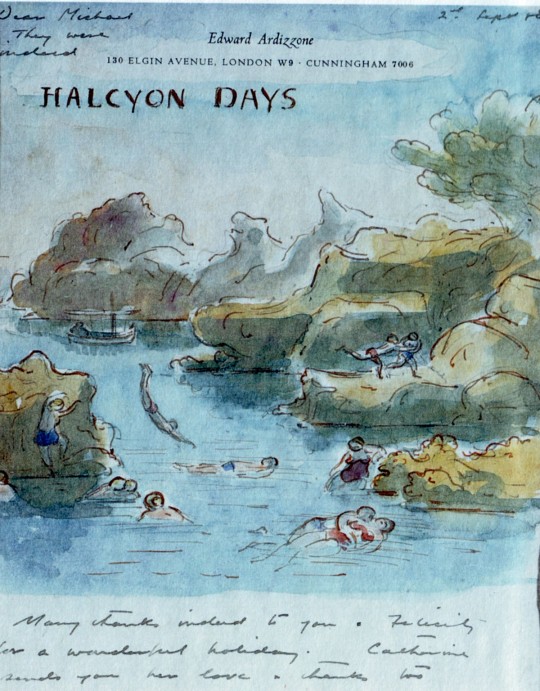
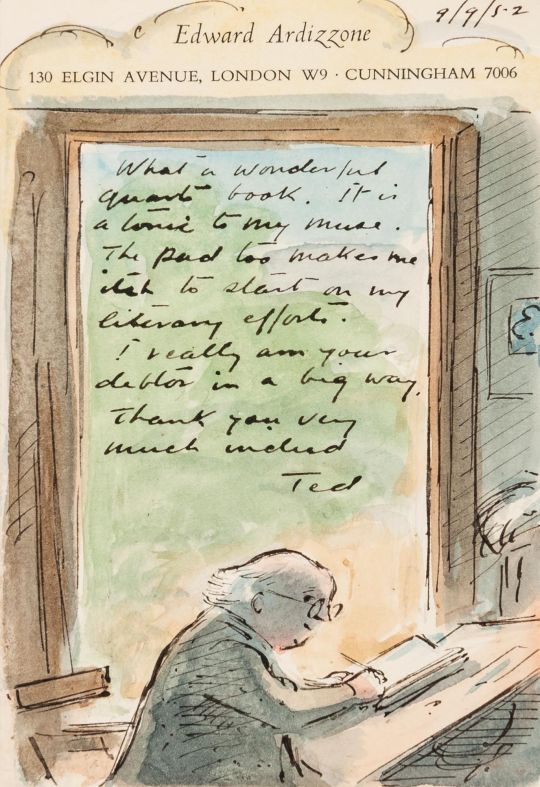

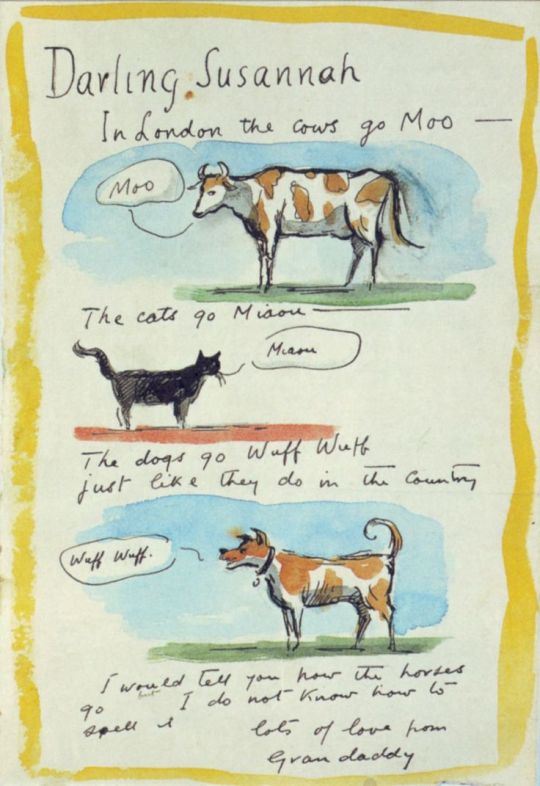
11 notes
·
View notes